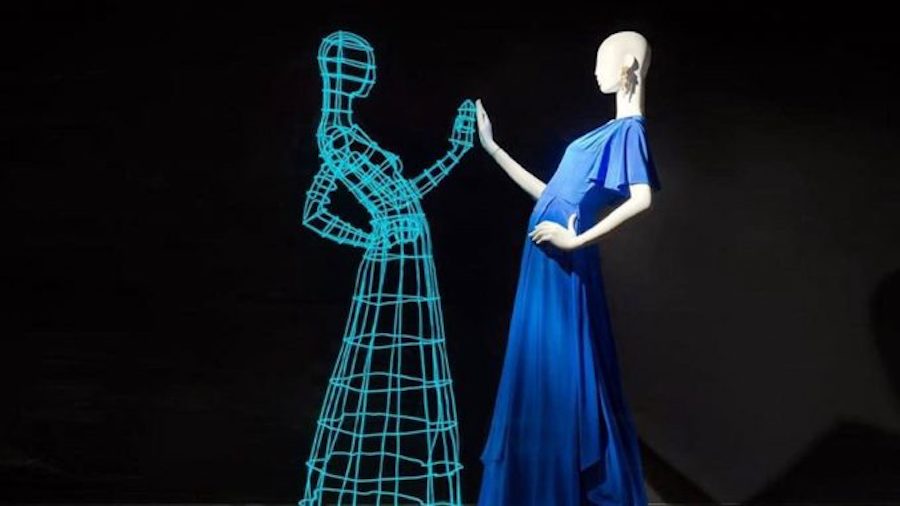This “easy come – easy go” conveyor belt of quick-fixes, is advertised not as a matter of choice or one of ease. But as something inevitable…”
The fizz stays.
Not exactly the paradigm shift many expected. Stratospheric energy levels levels spewed from the vents of creative hubs have simmered, though not disappeared. “The avant-garde of a promised revolution that would see the transfer of ultimate power to buyers remain active. In creative hubs and fashion schools, they exchange experiences and insights into a future that’s truly theirs, the world of Fashtech.
But, the introduction of new technology in production process does not imply the arrival of a revolution. This seems especially true in the universe of fashion and aesthetics.
Fashtech, what is it by the way?
Simply put, “Fashtech”, is the innovative use of technology to create a fashion-related product or service”. If technology is taken as “the application of scientific knowledge for practical purpose, can Fashtech be advanced as a novelty in the world of fashion?
Indeed, the answer is no. Since mankind found it useful and necessary to be clothed, history indicates that trends in the manufacturing and presentation of his clothing were influenced by advancements in scientific discoveries and innovations. More than 7000 years ago, for instance, history points toward the invention of 3-ply cord fragments (fibres) by man, to manufacture clothes, bags, and nets. The Linen fabric cloth was in use in ancient Egypt some 4,000 years ago, while the introduction of sharp glass, as a tool for fleecing, resulted in the invention of wool (woolly fleece) in the Near-East, circa 5,000 years ago.
Still, Fashtech’s arrival is promoted as a milestone, a revolution in the annals of the industry. Just why is this so? Promoters of the concept say any technology used with a fashion specific product or service or specific consumer in mind is Fashtech. It could be e-commerce websites to an app, to web technology, to textile innovation, to AR robotics and AR/VR ((Automations Robotics/ Virtual Reality)”.
Perhaps the novelty of the concept lies in its being positioned as “the intersection” between everything. A basket of options to every conceivable problem, serving utilitarian state of the art, time-efficient, and cost effective solutions. It facilitates the fashion business from pre-manufacturing to product delivery ends, and also guarantees end-users experience. This easy come – easy go conveyor belt of quick-fixes, is advertised not as a matter of choice or one of ease. But as something inevitable.
It has been argued that major fashion and luxury brands had for so long, retained all powers to themselves. They dictate what is fashion, and what trend or style should be. For those that crave change, the arrival of digital technology or the fourth industrial revolution, marks the start of power shift towards consumers, because people now have access to so much more information. So, they now know what they want.
Do they?
For all the talk about power shifting to consumers, the question to consider is, do consumers want this responsibility? Are they ready for it?
There’s little to suggest that the vast majority of shoppers want to know how clothes are produced, how they arrive in shops or details on the logistic network by which orders arrive at their doorsteps. Even if the knowledge on these would save cost.
Further on, the relation between brands, retailing outlets is hardly at a divorce point. The language of “disruption” thus appears superfluous. With conditions on fashion planet, still a universe away from, the global music industry, which since ICT revolution has witnessed a transfer of ultimate powers to reclusive kids fiddling with mixers in basement chamber of family houses. To play in the fashion industry requires more than a set of ICT skills.
Keeping a fashion line afloat demands the cultivation of a contact portfolio of many suppliers, and sales outlets. To produce a single brand (color/fabric texture) of his T-shirt, a designer must source materials from nine or ten suppliers. The fashion enterprise may therefore be considered a labor-intensive business. At every level of its value chain, the quantum of resources an enterprise requires for sustained short and long-term investment is immense. So too, risks.
“Fresh experiences” will not determine the fate of fashion. In a relative sense, the digital revolution may have liberated weak and powerless consumers. But it has empowered corporate dinosaurs the more, especially those on the retail (online) edge of business. With the Amazons of the world glowering, the future isn’t bright for “all-comers”. At some point, online retail dinosaurs and their manufacturing counterparts would gazump global fashion and accessories markets.
On the high side, not much has changed. St. Honore’s front door establishments remain the place to be, just like other highbrow fashion houses in fashionable districts of cities worldwide.
At the other end exists a burgeoning group of “mega retail brands” and the Wannabes. The market seems big enough for everyone, though some will end up gobbling others. “Positives”, being geometric highs recorded in population growth, income distribution, and ready access to credit, all combining to create a limitless market for the global fashion industry.
Everyday life impacted by ICT. Fact. But what’s the effect on emotional intelligence? The digital revolution has not re-set human emotion.
Would the day arrive that fashion’s leitmotif – fad, be replaced by algorithms and the utilitarian? For now , fashion remains about what’s in vogue … the urge for an upgrade in look, to catch the vogue experience, as the “trailblazer” or a follower.
Will Fashtech change this?
People are emotionally connected with marks. This condition remains unaltered, not minding radical and fundamental changes that have occurred in labor relations since the advent of the digital era. An ever-expanding range of devoted consumers is becoming even more addicted to products manufactured and retailed by big brands. Newer brands have emerged on the template of older corporate giants. All these happening in a supposedly revolutionary era in which a shift of ultimate power from big brands to consumers was announced as inevitable?”
Opinion – David Danisa

